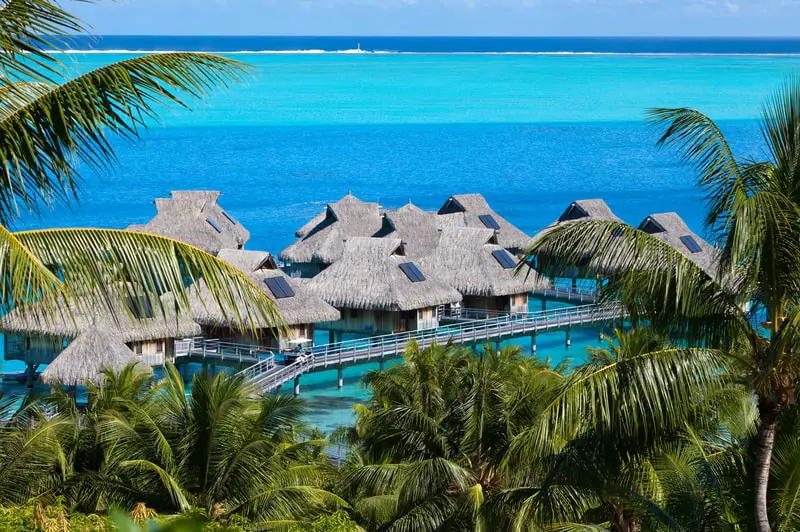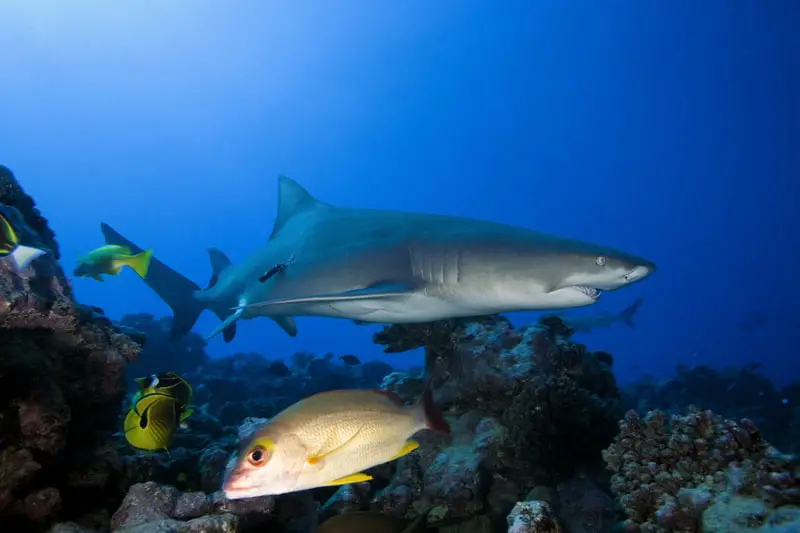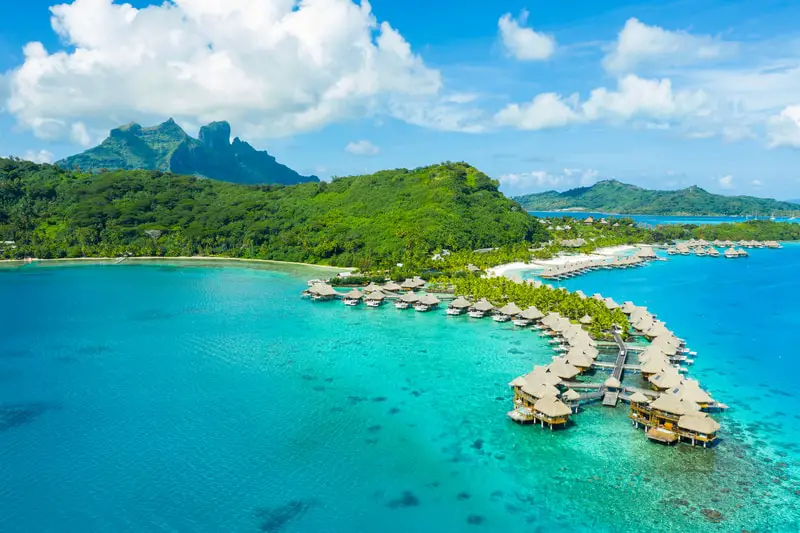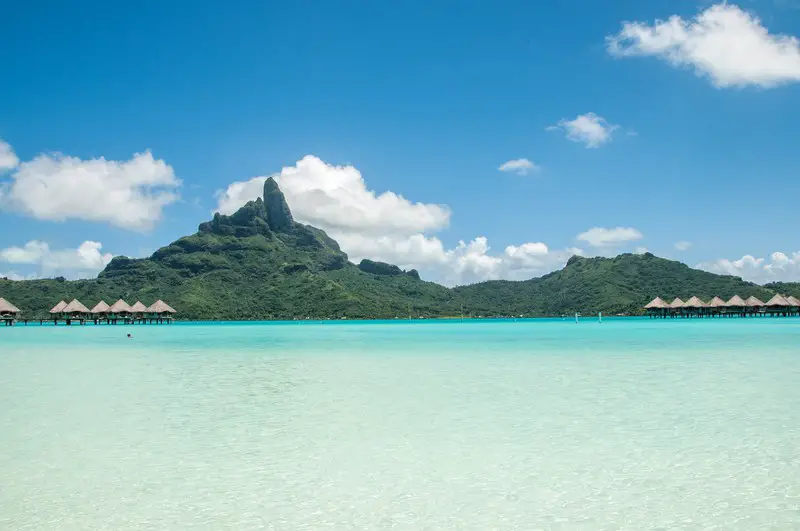
Bora Bora is one of the most incredible destinations out in the central South Pacific Ocean. The island is located 165 miles northwest of Tahiti and about 620 miles northeast of the Cook Islands.
It’s a volcanic island with incredible white sandy beaches and the clearest turquoise waters, surrounded by a coral reef. Snorkeling in Bora Bora is a truly magical experience as there are breathtaking corals and hundreds of colorful fish to see. For these reasons I even added this location to my Top 10 snorkel spots.
How to get there
Most people book a flight to Bora Bora Airport (aka. Motu Mute) after which they join a boat trip.
We always use Skyscanner, especially because there’s an option to combine your flight with some great deals on airport car hire. If you don’t have specific travel dates in mind, try their “Flexible dates” function (you’ll get this option once you select your departure date). That’s where we often find some great deals!
L’Aquarium
The Aquarium is an area on the reef where you can snorkel. It’s not an actual aquarium with glass walls! It’s named the Aquarium because there are so many different fish swimming around that it literally feels like you are swimming in a fish tank. This spot has visibility of up to 40 feet most days. The water is between 5 and 10 feet deep. There are many different colorful fish and the coral is absolutely breathtaking.
You will find shy moray eels hiding in some of the coral holes. Therefore, be sure to never stick your fingers inside because they bite whenever they feel frightened. Unfortunately some tour operators bring a variety of snorkel fish food in order to attract the marine life. We admit that it’s great for the experience, however, it does harm the biodiversity underwater in the long run. At least try to not feed the fish yourself!
It’s important that you take precautions not to step on the coral. It might be tempting to take a piece as a souvenir, but coral is a living organism and home to a great deal of marine life. It is protected, so make sure to look but don’t touch while snorkeling. The Aquarium offers the following fish species:
- Moray eels
- Surgeon fish
- Angel fish
- Parrot fist
- Clown fish
- Trigger fish
- Humbug fish
- Cleaner wrasse
- Lyre tail wrasse
- Blue clams
- Sailfish
- Green chromis
You can visit the area by joining a boat tour or by taking a kayak. Don’t swim!
The Inner Reef
The Inner Reef is an area in shallow water, about 5 feet deep. It’s inside the protective ring of the lagoon. You’ll find a sandy sea floor, together with stingrays and black tip reef sharks. There are some coral formations, but not too many.
Visibility is up to 50 feet within the Inner Reef. Reef sharks and sting rays are the main attraction with probably a sucker fish here and there. Joining a tour is your best option. Pay attention to possible currents as well.
Tip: In case you plan to snorkel with your children, just like in the above video, feel free to read our guide about snorkeling with kids.
The Coral Garden
The Coral Garden is a must see for snorkelers. It’s literally a garden that is made up of coral. The water is clear as glass and offers a visibility of up to 50 feet. You’ll spot many different kinds of corals and reef fish. This is one of the healthiest coral reefs in the world, and it is remarkable to see. You should be very careful not to touch or stand on any of the coral, as it is a protected living organism that is vital to the ecosystem. Let us list some of the marine life to expect:
- Fire coral
- Brain coral
- Flower coral
- Surgeon fish
- Blue clams
- Angel fish
- Sailfish
- Cleaner wrasse
- Lyre tail wrasse
- Humbug fish
- Clown fish
- Trigger fish
- Green chromis
- Parrot fish
You can reach this spot by kayak, but you will enjoy it better if you take a tour. Not only do the guides know the best spots, but they can help you navigate your way through the garden.
The Outer Reef
The Outer Reef is the outer part of the coral reef that encircles the entire island. Its depth is somewhere around 40 feet. The water is deeper and dark blue with a visibility of about 25 feet. Some people really enjoy the adventurous feeling of snorkeling out in the Pacific Ocean as opposed to the clear, shallow lagoons closer to shore. Quite obviously, you need to be an experienced snorkeler and weather conditions should be mild.
The Outer Reef is home to larger sharks. Black tip reef sharks grow between 4 and 6 feet in length. You might even see lemon sharks which grow up to 11 feet. Lemon sharks don’t seem to be a big threat to humans. If you are scared to snorkel, maybe it’s best to skip this spot. There is always a risk of danger as with any shark. Just do your own research. This Wikipedia article talks about the lemon sharks in more detail. Apart from sharks there are a few black triggerfish to observe.

Your Over Water Bungalow
Bora Bora resorts often allow you to stay in one of their typical “over water bungalows”. They allow you to walk outside, descend the ladder into the water, and snorkel directly. You’ll see angel fish, parrot fish, needle fish, starfish, eels and sea turtles.
Resorts with the Best Snorkeling
The Sofitel Motu guests stay on a private island near the Aquarium. Like we said, the Aquarium is one of the best places to snorkel if you want to see a wide assortment of marine life. Guests at the Maitai Bora Bora can easily reach the Aquarium as well. Finally, the Conrad Nui Resort could be worth a research, especially since many people call this the nicest resort on Bora Bora. We added a picture below.

Tip: Make sure to research the water bungalows on Youtube. Many people took a holiday video there. And hey, if you want to make your own video, read our tips and tricks in our guide about snorkeling with a GoPro.
The Climate In Bora Bora
Bora Bora is pretty warm all year round. Maximum average temperatures are somewhere around 86°F in January, which is the warmest month. However, this doesn’t mean that the “coldest” months are in fact cold. July is known as the “coldest” month with an average maximum temperature of 73°F. Still pretty warm and enjoyable if you ask us.
The rainy season lasts from November until April. You can expect quite a bit of rain during these months. Especially December. Therefore, if you don’t plan to snorkel in the rain, try to skip this month.
The dry season lasts from May until October. The amount of rain is definitely lower during these months. August usually shows the least amount of rain, but July and September don’t differ a whole lot.
If you plan to visit Bora Bora, make sure to learn about the climate yourself. We find this website very helpful since it shows some easy to understand graphs.

Final Thoughts
If you ever get the chance to visit Bora Bora, be prepared for an amazing marine life. Renting one of those lovely water bungalows will start your day with a breathtaking view. Enter the water from your deck and you’ll already be surrounded by an impressive underwater world.
A snorkel trip would be a good idea to expand this experience. Join a group of people, learn more about the scenery and discover a variety of fish and corals. If you dare you can even snorkel with sharks and rays. Just do your own research or inquire with your instructor.
Pay attention to currents. Not every day is the same in Bora Bora and winds can appear wherever you snorkel. Your instructor will be able to provide the necessary information. Maybe they will even provide life vests or possibly a set of snorkel fins.
We hope you enjoy Bora Bora in case you’re able to visit this lovely island!
